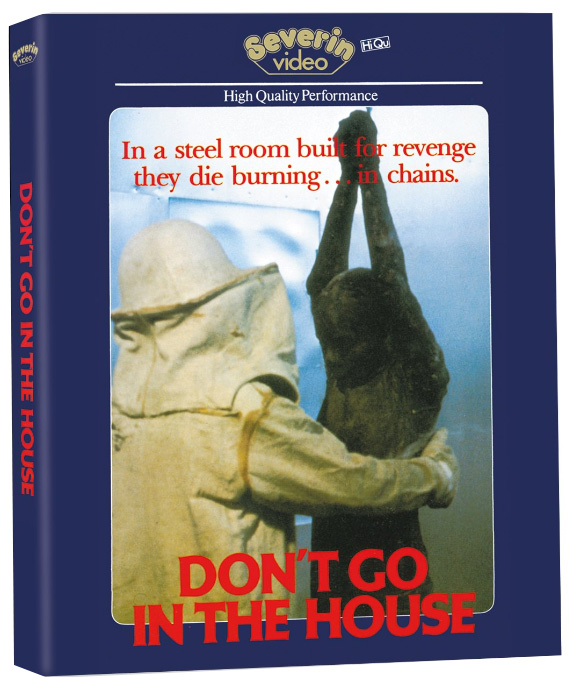Dan Grimaldi plays blue collar worker Donny “I’m not Donny Osmond” Kohler who becomes somewhat troubled after his abusive mother finally kicks the bucket. At first, he’s overjoyed to be free of her tyranny, but he’s so deranged that he starts doing what every boy does without his mommy around: he takes a flamethrower and burns up some ladies! Woops, scratch that. According to an article I just read before this sentence, only about 18% of boys use a flamethrower on ladies (or anyone really), and those numbers have been dropping steadily since boba tea shops have been opening up around the country. Donny tries to escape his homicidal urges, but can he ever truly fit into a society that doesn’t accept pyromania as a form of expressing one’s frustrations with the opposite sex? Watch and find out!
While Don’t Go in the House (1979) tries to paint him as a sympathetic figure, I find Donny to be a truly pathetic ghoul but never a pitiable one. Despite his complete break from reality (if he ever was truly connected to it to begin with), I found him to be an irredeemable monster who seeks out his victims and uses his gullible goofball persona to keep them off their guard. He does have a fleeting moment of conscience when he tries to confess his local priest. The funny thing is though, Donny keeps the details just vague enough so as not get into any real trouble. After achieving a sort of false absolution from the kindly father, he tries to start fresh with his life. And when things go wrong, he immediately doubles down on his mayhem, seemingly aware that the good times are about to come to an end.
The poster child for the Video Nasty era, Don’t Go in the House lives up to its reputation, at least in terms of its most famous scene. Luckily, there’s an intelligent and extremely unsettling film wrapped around the sleaze and sadism. From the opening sounds of a blast furnace intermingling with waves of unwholesome, pulsing, and droning synthesizers, the tone of this film creeps into your skin (which will all be burned off momentarily). Composer Richard Einhorn is no stranger to the horror genre with titles like Shock Waves (1977), The Prowler (1981), and Blood Rage (1987) on his resume. When not recreating the sound of a charnel house, the themes in this film’s score are truly haunting and eerily beautiful. It’s too bad director Joseph Ellison didn’t stick with filmmaking. He wrote and directed one more film in the mid-80s, a drama called Joey (1986), and hasn’t made anything since.
If you’ve been waiting on a definitive release of Don’t Go in the House, then I think your wait is over. Not only does the film look and sound amazing, you have multiple versions to choose from. For this review, I went with the Integral Cut AKA an extended cut which brings all of the key footage from various versions together; and I really do think that this is way to go for assessing the film. But you could fire up either the theatrical or the Alternate TV Cut. It’s like a salad bar of burning flesh and your eyes are the tongs!
There are three (!) audio commentaries on this disc: one from Nightmare USA author Stephen Thrower, one from star Dan Grimaldi, and yet another one with Ellison and producer Ellen Hammill. Thrower gets the short end of the flamethrower here. Whoever mixed his commentary decided to crank the film’s soundtrack back up between every pause in Thrower’s speech. It’s not unlistenable but this effect is VERY DISTRACTING whenever music is playing or the film gets loud while Thrower is talking. Severin, please don’t do that again! There are several featurettes including interviews with the film’s co-producer Matthew Mallinson and co-writer Joseph R. Masefield. There’s an excellent video essay by David Flint that breaks down this film’s place in horror and slasher film history. My favorite of these extras is a visit to the locations of Don’t Go in the House. The titular domicile has barely changed at all! There’s also an interview with the director and interviews with filmmakers Matt Cimber, Jeff Lieberman, and others about the grindhouse era of the 1970s and early 1980s.

